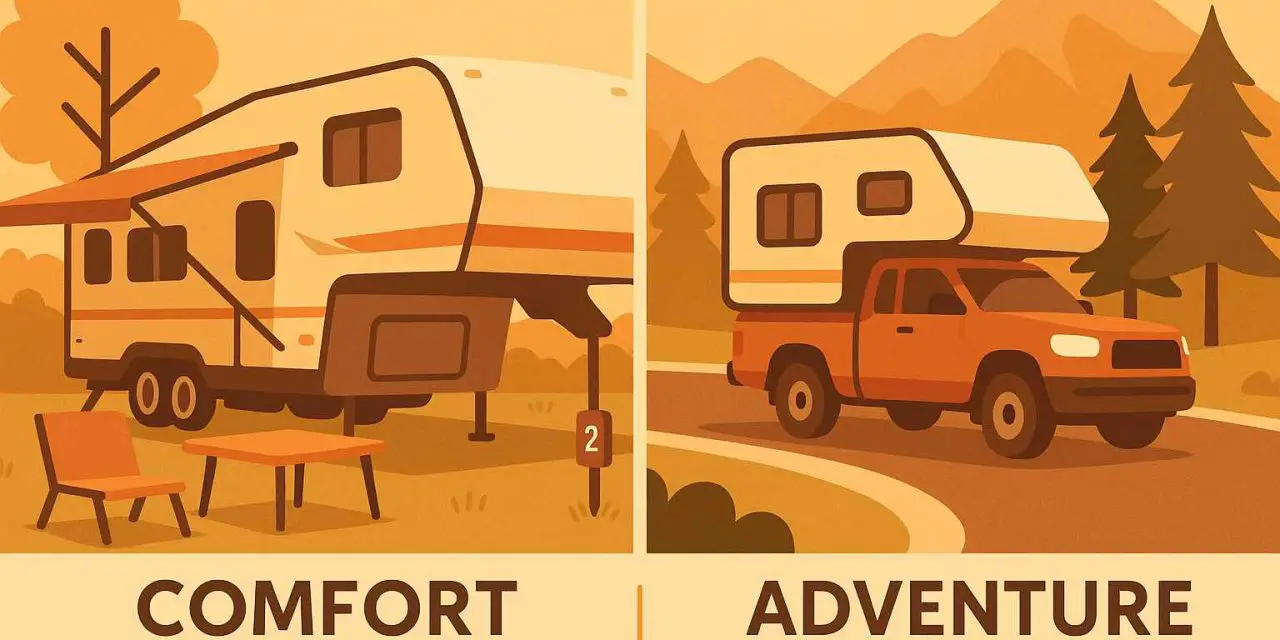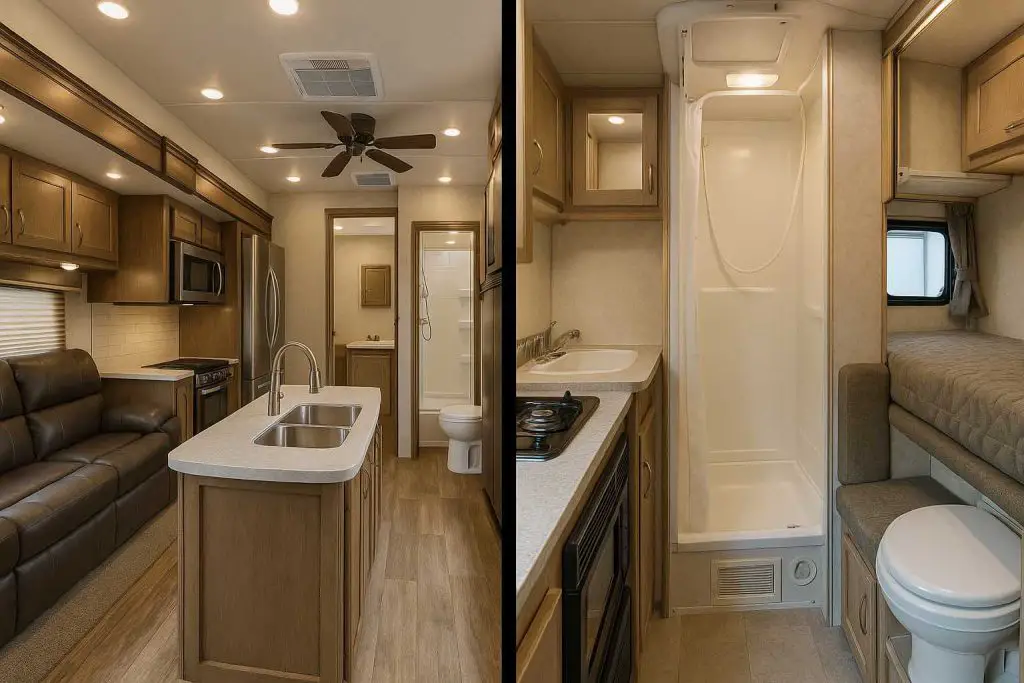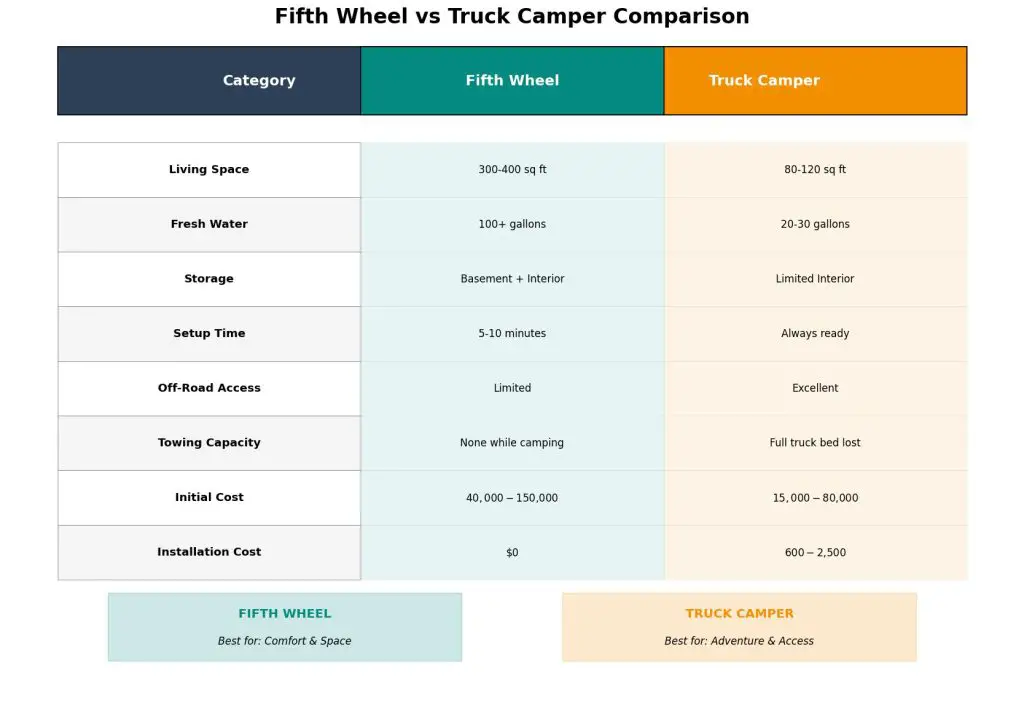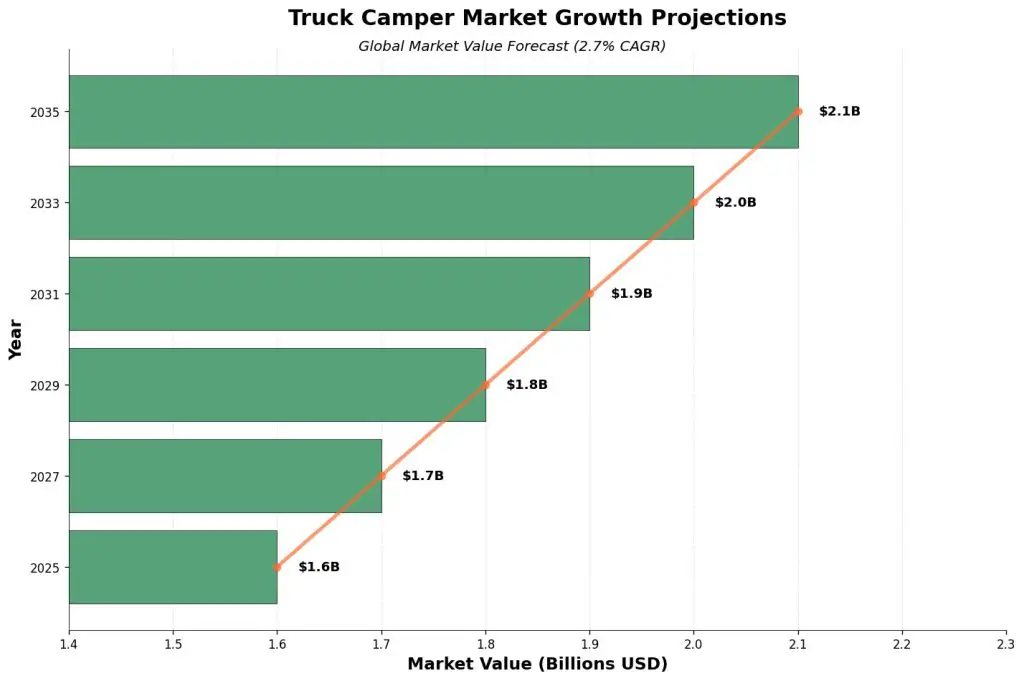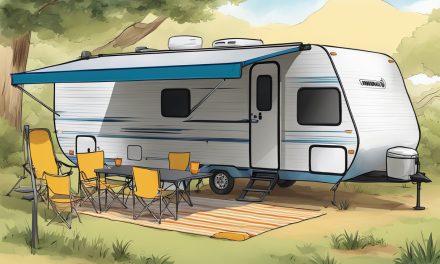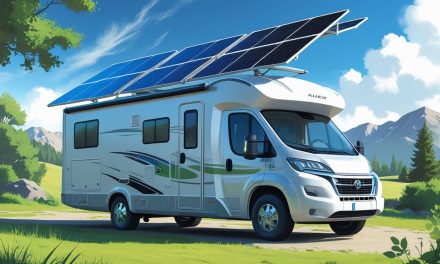Would you like to save this article?
You’ve been living the fifth wheel dream for years, but suddenly you’re eyeing those compact truck campers and wondering if the grass is greener on the other side. Before you make the leap like the adventurous RVers in this video, you need to understand exactly what you’re getting into.
The transition from a spacious fifth wheel to a truck camper isn’t just about downsizing—it’s about completely reimagining how you RV. You’ll face unexpected challenges, discover surprising benefits, and learn things about camping that your fifth wheel never taught you.
These seven realities will either confirm your decision or send you running back to your current setup.
1. Your Installation Will Be More Complex Than You Think
When you watch YouTube videos of truck camper installations, they make it look like a weekend project. You’ll quickly discover that mounting a truck camper properly requires significant truck modifications that can cost between $600-$850 just for quality tie-down systems.
The video shows the couple struggling with Torklift tie-down installation, which required routing parking brake cables through brackets and dealing with clearance issues they never anticipated. Frame-mounted systems like Torklift start at around $343.99 for front tie-downs and $285.99 for rear tie-downs, but that’s just the beginning.
Market Reality Check: According to industry data, truck camper sales were down 12% in 2024, partly due to the complexity and cost of proper installation that many buyers underestimate.
Your truck bed will never be the same again. Once you commit to those frame-mounted tie-downs, you’ve essentially married your truck to the RV lifestyle—and unlike human marriages, this one involves power tools and a lot of cursing.
2. You’ll Lose Your Truck Bed Functionality
That spacious truck bed you’ve been using for hauling gear, groceries, and everything else? Kiss it goodbye. The video demonstrates how the couple had to remove their entire bed mat, toolbox, and even their backup camera functionality.
Your 9,360-pound truck (loaded with just fuel, passengers, and minimal gear) will suddenly transform into a 12,100-pound beast carrying a 2,740-pound camper. You’ll lose over 500 pounds of cargo capacity that you didn’t even realize you were using.
Storage Solutions: Many truck camper owners invest in additional storage solutions, with some spending $1,000-$2,000 on roof boxes, hitch cargo carriers, and other accessories to replace lost truck bed space.
It’s like trading a spacious walk-in closet for a shoebox and then realizing you still need to fit all your clothes. Suddenly, that fifth wheel basement storage doesn’t seem so unnecessary.
3. Your Comfort Zone Will Shrink Dramatically
The Palomino Maverick featured in the video offers just 27 gallons of fresh water compared to the 100+ gallons you might have in your fifth wheel. You’ll go from a residential-sized refrigerator to what amounts to a dorm room mini-fridge.
The wet bath setup means your toilet, shower, and sink share the same tiny space. At 6 feet tall, the video’s host could barely stand upright in most areas, and the bedroom requires careful choreography to avoid bumping your head on the massive roof vent.
Space Statistics: The average truck camper offers 80-120 square feet of living space, compared to 300-400 square feet in a typical fifth wheel.
Welcome to playing real-life Tetris every time you want to make a sandwich. You’ll become a master of efficient movement, or you’ll develop a permanent slouch from all the head-ducking.
4. Your Electrical System Will Need an Overhaul
Your fifth wheel’s robust electrical system will seem luxurious compared to a truck camper’s single lead-acid battery. The video shows the couple relying on an Oupes power station just to run their air conditioning for about an hour.
Most truck campers come with minimal electrical setups that require significant upgrades for comfortable boondocking. You’ll need to invest in lithium batteries, solar panels, and possibly a generator to match your fifth wheel’s power capabilities.
Power Reality: A typical truck camper’s 15,000 BTU air conditioner pulls over 1,300 watts, meaning you’ll need substantial battery capacity or shore power for climate control.
Your new relationship with electricity will be like going from an all-you-can-eat buffet to carefully rationed military rations. Every LED light becomes a strategic decision.
5. Your Maintenance Accessibility Will Become a Nightmare
The video reveals a perfect example of truck camper maintenance challenges: the water heater access door is blocked by the jack motor. Simple maintenance tasks that were easy in your fifth wheel become complex puzzles requiring partial disassembly.
You’ll find yourself crawling under the camper, working in cramped spaces, and discovering that routine maintenance requires tools and flexibility you never needed before. The couple’s broken door handle and damaged awning are just the beginning of your maintenance adventures.
Maintenance Costs: Industry data suggests truck camper owners spend 15-20% more on maintenance per year due to accessibility issues and the complexity of working in confined spaces.
Changing a water heater element goes from a 30-minute job to a three-hour ordeal involving yoga poses you didn’t know existed. Your chiropractor will send you a thank-you card.
6. Your Travel Style Will Completely Change
The video emphasizes a crucial point: you’ll go from searching for campsites without trees (for satellite reception) to actively seeking shaded spots. Your camping preferences will flip entirely.
Truck campers excel at accessing remote locations your fifth wheel could never reach, but you’ll sacrifice the comfort and convenience of established campgrounds. You’ll become a different type of RVer—one focused on adventure over amenities.
Market Insight: The global truck camper market is projected to grow from $1.6 billion in 2025 to $2.1 billion by 2035, driven by increased interest in off-grid camping and adventure travel.
You’ll transform from a civilized campground connoisseur to a primitive camping warrior. Your Instagram posts will shift from “check out this resort” to “guess where I’m pooping today.”
7. Your Budget Will Take Unexpected Hits
While the couple spent $6,500 on their used 2011 Palomino Maverick, the hidden costs add up quickly. Between tie-downs, electrical upgrades, storage solutions, and maintenance tools, you could easily spend another $3,000-$5,000 in the first year.
The video shows immediate issues: broken awning, problematic speakers, and accessibility challenges that require additional investment. Unlike fifth wheels, truck campers often need immediate attention due to their age and previous use conditions.
Cost Breakdown:
- Quality tie-down system: $600-$850
- Electrical upgrades: $1,000-$2,500
- Storage solutions: $500-$1,500
- Maintenance tools: $200-$500
- Unexpected repairs: $500-$1,000
Your wallet will feel like it’s on a crash diet while your truck camper develops an expensive appetite for upgrades and repairs.
The Bottom Line
Switching from a fifth wheel to a truck camper isn’t just a change—it’s a complete lifestyle transformation. You’ll trade space and comfort for access and adventure, comfort for complexity, and convenience for capability.
The RVers in this video made their decision based on specific needs: backup housing for potential fifth wheel repairs and the desire to access remote locations. Before you make the switch, honestly assess whether you’re ready for the compromises and challenges that come with truck camper life.
Your decision should be based on your camping style, physical capabilities, budget, and tolerance for complexity. If you’re seeking adventure and don’t mind working within constraints, a truck camper might be perfect. If you value comfort and convenience, maybe that fifth wheel isn’t so bad after all.
SOURCES
- RV Industry Association – 2024 RV Shipments Report
- Fact.MR – Truck Campers Market Forecast 2025-2035
- Torklift International – Truck Camper Tie Down Costs
- Bish’s RV – RV Sales and Shipments 2024 Report

